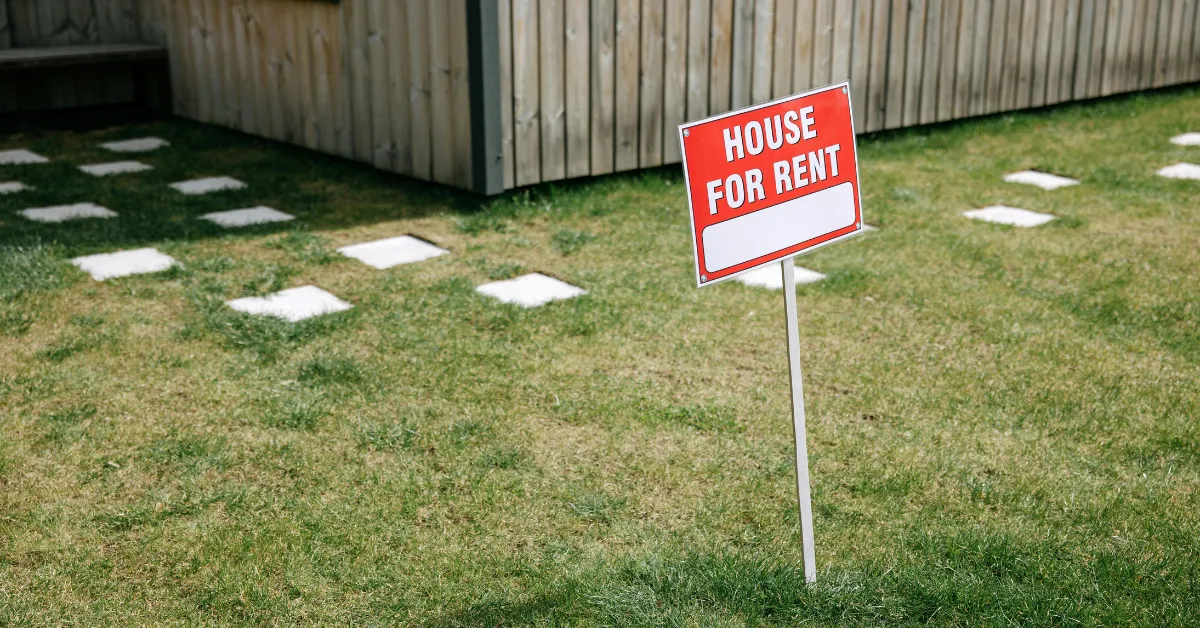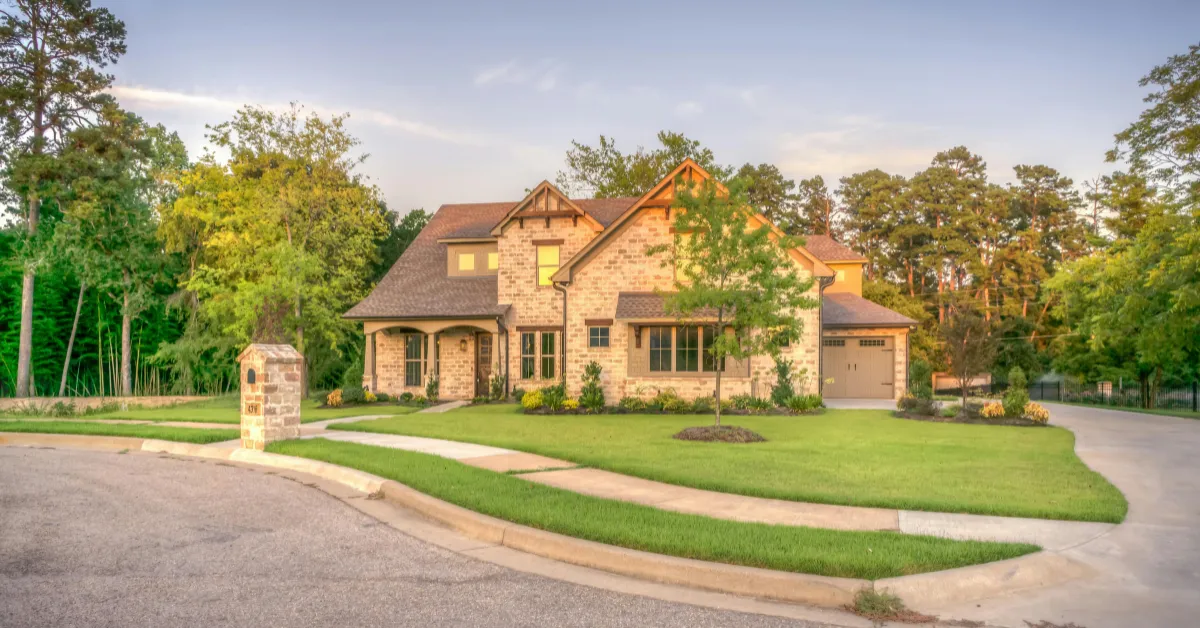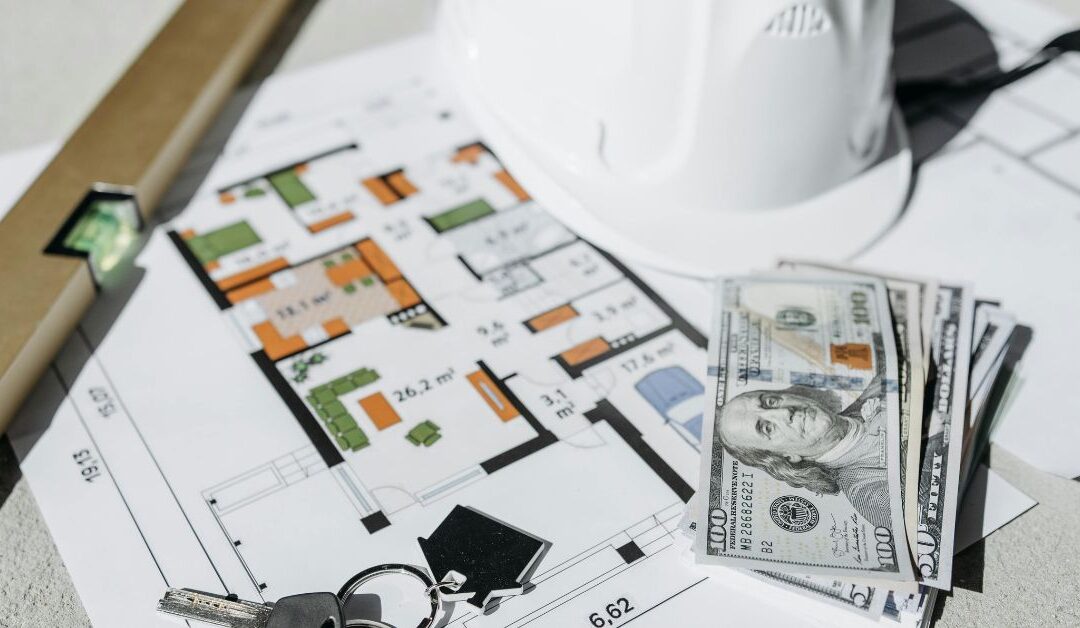How do you calculate cash flow on your rental property?
That’s what you’re going to learn today.
If you want to…
- Earn passive rental income
- Replace your W2 income
- Build financial security
…Then you’re going to love this article. I’ve built a seven-figure rental property portfolio and today, I’ll show you how to calculate your cash flow, what cash flow to expect, and how to improve it.
What is rental property cash flow?
Rental property cash flow is the difference between your property’s income and expenses. Simply put, it’s a way to measure how much money your rental property is bringing in after covering all costs. This calculation helps you understand whether your investment is profitable.
- Positive cash flow: Your rental income exceeds your expenses and is profitable.
- Negative cash flow: Your expenses are higher than your income.
To calculate your cash flow, you need to account for all expenses. Some common operating expenses include:
- Downpayment and closing costs
- Maintenance/repairs
- Insurance
- Property taxes
- Vacancies
- CapEx (capital expenditures)
- Advertising
- Investment-related travel
- Payroll (for any employees)
Some of these expenses, like insurance and property taxes, are fixed costs—they remain stable over time. Others, like maintenance or vacancies, are variable costs that can fluctuate based on the property’s condition or market demand.
The good news? Many of these expenses are tax-deductible, which can reduce your overall financial burden (and I’ll talk about this more in a minute).
How to calculate cash flow on a rental property
To calculate your cash flow, use this formula:
Income – expenses = Monthly cash flow
- Start with your income
This includes your monthly rent and any additional revenue streams, such as parking fees or laundry facilities. - Subtract your expenses
Deduct all costs associated with owning and managing the property (such as mortgage costs, maintenance or repairs costs, property taxes, and home insurance). - Get your cash flow before taxes (CFBT)
The result is your cash flow before taxes. To make this easy, you can use a rental property cash flow calculator like this one.
Let’s look at a specific example to see how this works:
Monthly Rental Income: $6,000
Expenses:
- Mortgage Payment: $2,000
- Property Taxes: $500
- Insurance: $200
- Maintenance/Repairs: $300
- Property Management Fees: $600
- Vacancy Allowance: $300
- Other Costs (Utilities, etc.): $100
- Total expenses: $4,000
Cash flow calculation:
$6,000 – $4,000 = $2,500
Your monthly cash flow is $2,500.
For more, take a look at this video where I explain how to do a real estate cash flow analysis:
With that, what is a good cash flow?
Let’s find out.
What is a good cash flow on a rental property?
A yearly cash flow of 10-15% of a property’s purchase price is considered excellent.
For example, if you purchase a property for $200,000, a yearly cash flow of $20,000–$30,000 would be a strong result.
However, if your primary goal is property value appreciation, having any amount above expenses (or even breaking even) might be acceptable, especially in high-growth markets.
So determining what qualifies as “good” cash flow depends on your investment goals and the property’s potential.
There are two rules you can use to assess a property’s cash flow:
What is the 2% rule in real estate?
The 2% rule is a quick way to determine if a property can generate solid cash flow.
- Guideline: The monthly rent should equal or exceed 2% of the property’s purchase price.
- Example: For a $100,000 property, the monthly rent should be at least $2,000. Properties that meet or exceed this rule often have better cash flow potential.
What is the 50% rule in rental property?
The 50% rule helps estimate operating expenses for a rental property.
- Guideline: Operating expenses (excluding mortgage payments) should consume about 50% of the rental income.
- Example: If your monthly rent is $2,000, expect $1,000 in operating expenses like maintenance, taxes, and property management.
Next, we’ll look at what impacts your cash flow.

What impacts cash flow on a rental property?
Several factors impact rental property cash flow, including:
- Rental income: Rental price, market demand, local regulations, and vacancies.
- Financing terms: Mortgage payments, interest rates, and loan type and term.
- Operating expenses: Property taxes, insurance, maintenance and repairs, utilities, and HOA fees.
- Property management: Management fees or self-management.
- Tenant issues: Late payments, evictions, and damage caused by tenants.
- Unexpected expenses: Emergency repairs.
- Market conditions: Economic trends and local real estate market.
- Taxation: Property tax increases and tax benefits.
- Renal property strategy: Short term vs long term rentals, rent-by-the-room rentals, and additional income streams (such as parking and laundry facilities).
But can you do anything about your cash flow?
Yes, you can–something we’ll look at next.
How to improve your rental property cash flow
The best ways to increase your cash flow are to:
1. Ask for more rent
In some cases, improving your positive cash flow can be as simple as increasing your rent to keep up with your property’s market value.
Not sure how much you could rent your property for? There are tools you can use to look up rent prices based on your zip code.
2. Upgrade your property
Upgrading your property is one of the most effective ways to increase its value—and by extension, your cash flow. Strategic improvements can help you charge higher rent while attracting quality tenants.
A few specific examples that can give you a high ROI include:
Finish your basement
According to research, finishing your basement can result in a 70% ROI.
And that makes sense: Flipping a basement instantly adds extra square footage where your tenants can hang out, which is especially valuable if the rest of the rental is small.
You can also add valuable amenities, like a washer and dryer, a pingpong table, and so on.
Repaint walls
A fresh coat of paint can make a space more inviting for a minimal upfront investment. Just make sure to stick with neutral colors. Neutral colors match with all kinds of decor by definition, so you won’t have to keep repainting your walls to accommodate tenant preferences.
Focus on curb appeal
The best renters value living in a home that looks good from the outside. So, to attract those kinds of tenants, keep the outside of your rental in good condition.
Things like regular lawn care and tasteful landscaping can go a long way here.
A few other things that can dramatically increase your property’s curb appeal: An updated garage door, a steel front door, or even small touches like a new mailbox and house numbers.

3. Minimize vacancy
When your property sits empty, your cash flow takes a direct hit. Fortunately, there are several strategies you can use to reduce vacancies and keep your rental income steady.
Example: To attract high-income earners who would be willing to pay a higher rent for a nice place, think about amenities they’d want that you can provide, like off-street parking.
By filtering out tenants who are likely to default on their rent and need to be evicted, you can save yourself a lot of trouble down the road.
And once you have dream tenants, an effective way to retain them is to offer a great rental experience. So, stay on top of things like regular maintenance, and take their feedback into account.
Another thing you can do is have tenants sign a 12-month lease before moving in.
That way, you’ll know that your property will be rented for at least a year at a time – without you having to scramble to find tenants every few months.
To maximize your returns, renting during the summer when demand is highest is also a smart move.
4. Add extra income streams
Rent isn’t the only way to make money from your properties.
For example, consider offering parking as an optional add-on. Depending on your property’s location and your tenants’ needs, adding designated parking to your rental can instantly make it more valuable.
Another way to boost your earnings?
Offer storage space. The self-storage market is worth over $44 billion, with no sign of slowing down. A lot of people have stuff they can’t fit in their homes, so if you have room, it’s something to think about.
5. Rent by the room
As I know first-hand, the rent-by-the-room model is an efficient way to maximize your positive cash flow.
What I do is buy large properties in college towns, maximize the number of bedrooms, and rent to college students.
Thanks to this rent-by-the-room strategy, I end up with significantly higher cash flow than if I rented the same property to one person.
Quick example: If a couple decides to rent out the same room in one of my rentals, I charge on a per-person basis, which helps me earn even more.
So, for one of my properties, I ended up charging $940 for the room (versus the usual $670 for one occupant).
And since I also rented the rest of the property, my cash flow was over $2,700 per month – 73% more than the Rentometer estimate.
My clients have similar results. Like Kai who makes $4,200 in monthly cash flow:
Or Clara, who was able to leave her W2 thanks to her rental property business:
And if you decide to go this route, you can start small: Even converting an office into an extra bedroom and renting to two people instead of one can increase your returns.
6. Self-manage
If you want to avoid having a property manager (but don’t want to work 24/7 either), good news: You can. I follow a system I call “tenant empowerment”.
Here’s how it works: My tenants know that if common issues come up, like spotty internet or plumbing leaks, they can call the service providers directly – and skip having to call me first.
Result: Problems get resolved quicker, and I don’t have to be involved.
7. Renegotiate your costs
As an investor, always keep track of where your money is going, and see how you can cut back on your spending.
For example, when you’re on the market for an investment property, don’t settle for something just because it’s cheap.
Here’s why: Cheap properties can end up costing a lot in unexpected repairs. I learned this the hard way after shelling out $30,000 to fix a sewage leak and animal infestations.
So, my advice is, steer clear of old houses, and always have a property inspected before making a purchasing decision.
What are some other ways to save?
Here are a few:
- Get good rental property insurance. That way, if your investment property gets damaged, you won’t have to pay the full amount out of pocket.
- Refinance your mortgage. Shopping around for a better rate can save you a lot of money in the long run. For example, if you can afford higher mortgage payments, consider getting a shorter loan to reduce interest costs.
- Do preventative repairs. Regularly inspect your plumbing, electrical, and HVAC systems, and check for things like leaks, mildew, and animal infestations.
- Check appreciation potential. Investing in a thriving area with great schools and employment opportunities will make your property easier to rent and limit vacancies.
- Choose the right contractors/vendors. If you need a contractor or vendor to help you renovate or manage your rental, pick someone who has valid licensingand insurance, not just good reviews.
-
Do you pay taxes on cash flow from your rental property?
In a word? Yes. As a real estate investor, you’d file a 1040 Schedule E with the IRS. Basically, this is the specific form to use for declaring supplemental income that’s not generated from working a typical job.
Here’s the good news: There are plenty of expenses that you can deduct from your taxes to reduce how much you owe.
For example:
- Ads and marketing
- Repairs/maintenance
- Mortgage interest
- Insurance
- Property-related travel
- HOA fees
- Property depreciation
- Phone bills
- Tenant screening reports
- Materials and supplies
- Property management fees
This is not a complete list, but it should give you an idea of what kinds of expenses you can deduct.
The key to getting as many tax deductions as possible? Keep careful records of your expenses.
For example, if you get your siding replaced and want to claim a tax break, keep receipts, contracts, and any other records that prove how much you paid and what repairs you had done.
Depending on your rental income and tax-deductible expenses, you might not owe property taxes at all.
FAQ: Rental property cash flow
What is the average cash flow on a rental property?
On average, you can expect your cash flow to be about 8%. With that said, that’s just the average, and how much you make will depend on a lot of factors (like location and market demand).
What is a good ROI on rental property?
In general, a good ROI on rental properties is between 5-10%. However, there are plenty of factors that affect ROI, such as location, property condition, property management, and rental income.
What’s next?
So, there you have it!
Now you know all about cash flow for rental properties and how to calculate it. As you can see, there are a lot of ways to increase your positive cash flow and keep more money in your pocket when tax season rolls around.
As an investor with a seven-figure portfolio myself, I help people just like you go from having no investment knowledge at all to becoming savvy investors who have a lot more financial freedom.
Want that kind of life too? Don’t know where to start?
You can book a call with me right here.


